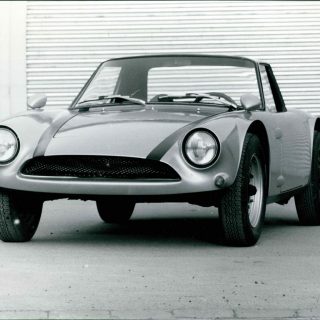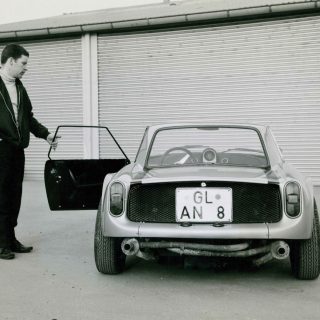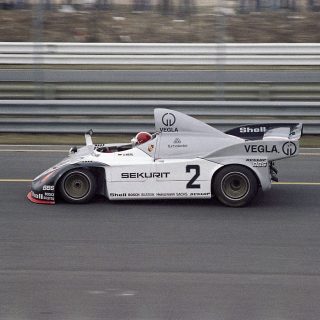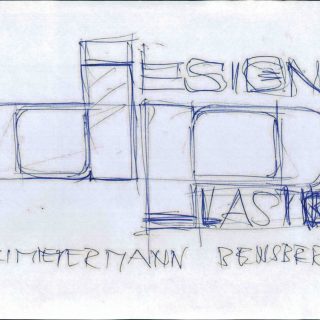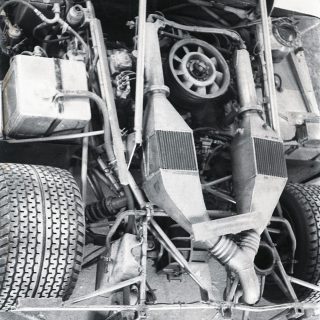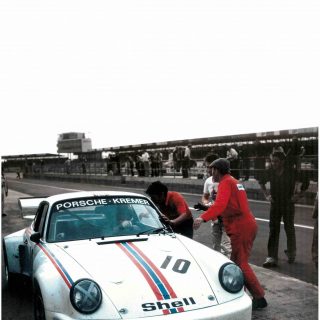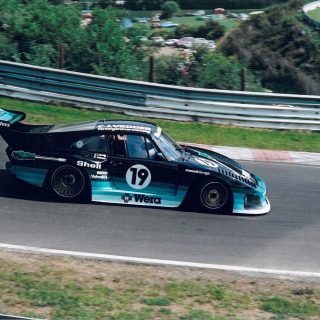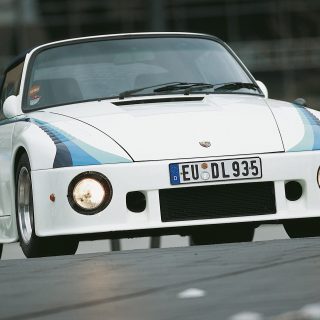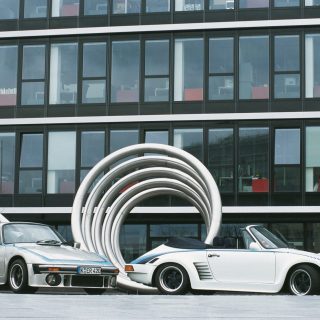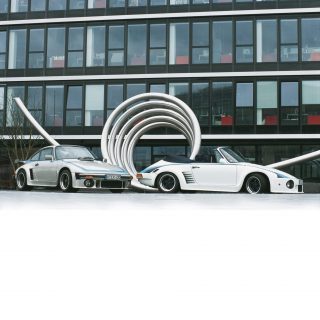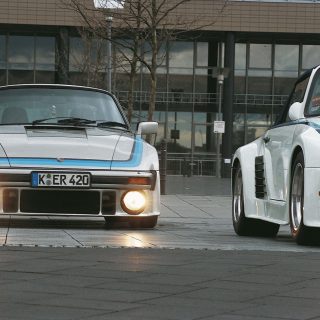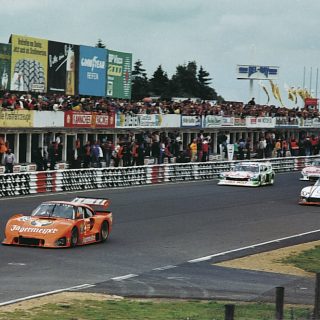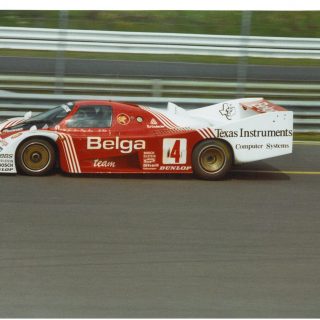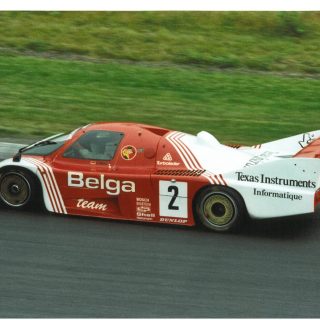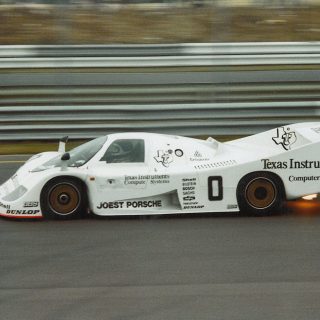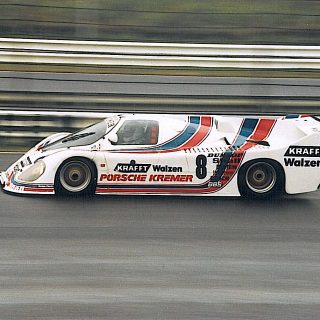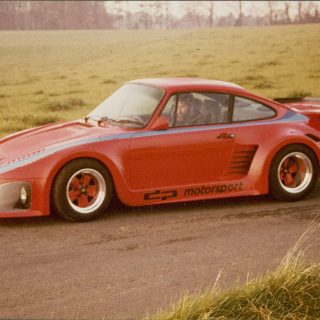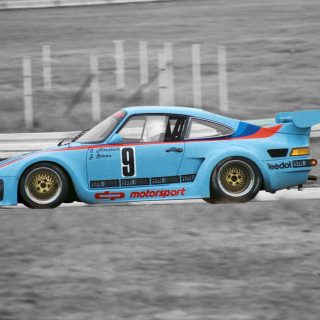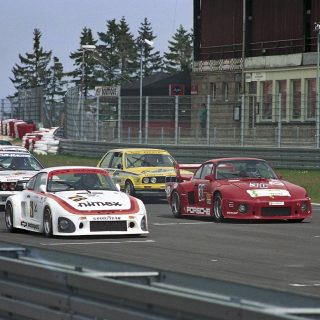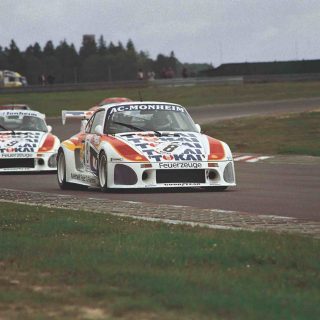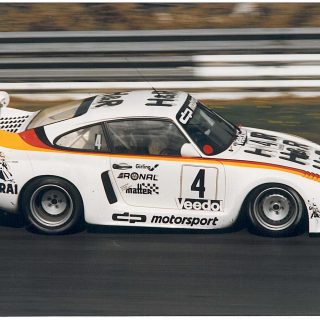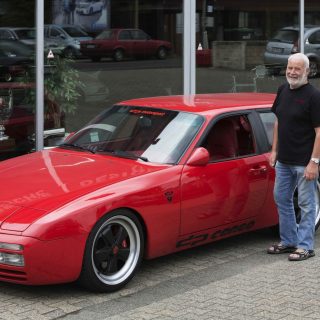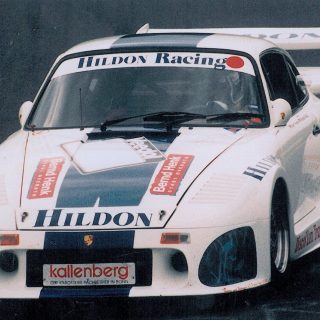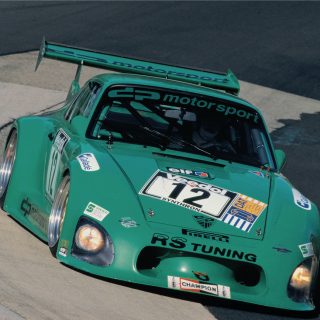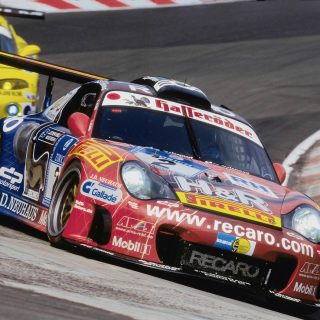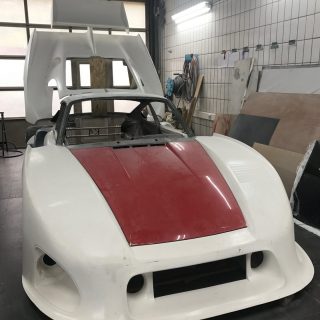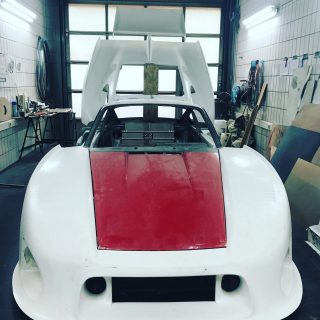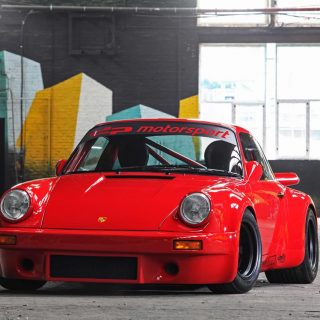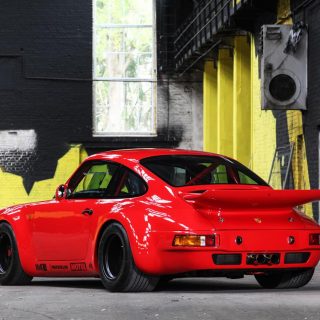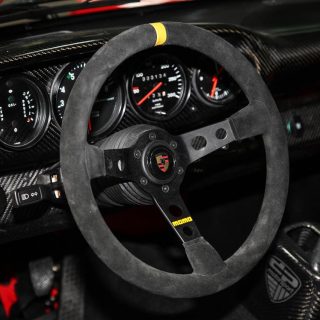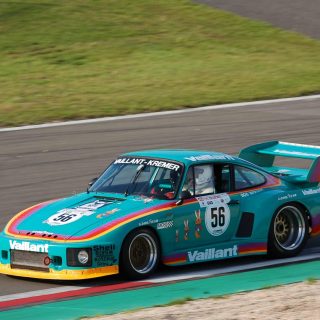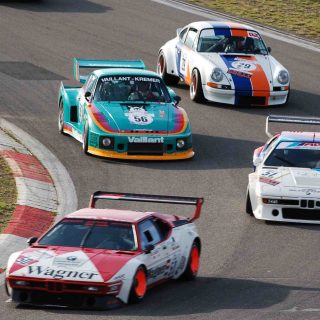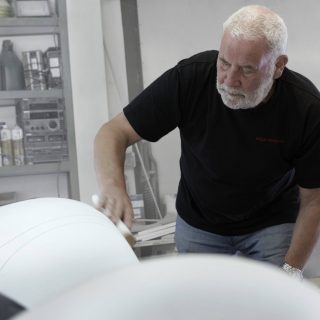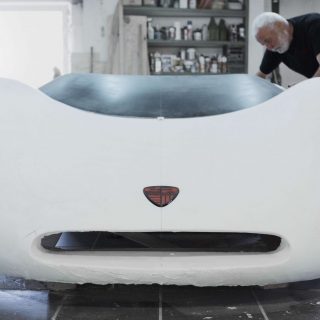Ekkehard Zimmermann celebrates his 80th birthday
On September 3, 2020: Ekkehard Zimmermann celebrates his 80th birthday – the life and work of a design authority in (sports) vehicle construction.
Ekkehard Zimmermann, born on September 3, 1940 in Peine, Lower Saxony, is a German automobile designer. The well-educated model maker formed his first prototype with a complete body made of polyester material, the “Dingo”, between 1960 and 1962. Two years later, in 1964, he joined the design studio at the Ford factory in Cologne. Before founding his own company in Bergisch-Gladbach in 1973, he worked in the cathedral city for the next nine years. The first commissioned work for the famous Porsche Kremer racing team in Cologne made him known to an international audience. From 1976 on, Zimmermann realized the mold construction of all Kremer Porsches in motorsport. On June 10, 1979, one of his creations, the Kremer Porsche 935 K3, won the Le Mans 24 Hours. With the end of the collaboration in 1983, the focus shifted more and more towards exclusive small-series vehicles such as the Porsche 935 dp II, which was inspired by the successful work in racing. In 2003, Ekkehard Zimmermann, now 63 years old, returned to top-class motorsport after 20 years. The dp5 based on the 996 generation Porsche 911 turbo shaped the VLN long-distance races on the Nürburgring-Nordschleife as “Turbinchen” until 2005. As one of his last major projects, the father of two modeled the Kremer Porsche 935 K3, which he created himself in 1981, similar to the original between 2015 and 2017. On September 3, 2020, Ekkehard Zimmermann, who lives in Overath in the Rhineland, will celebrate his 80 birthday.
Youth and education in Peine / Lower Saxony.
Ekkehard Zimmermann grew up with two older siblings in Peine, Lower Saxony. At the age of 15, he started his education as a model maker. During this time he mainly made models for later gray cast molds. As his understudy piece, he presented such a model made of wood. At the same time, he was experimenting in a rented barn on his first independent automobile construction projects. Before the “Dingo” based on the Volkswagen Beetle, the first prototype with a completely plastic body made of polyester material, could be created from 1960 to 1962, Zimmermann worked in a malt house immediately after completing his first professional education, where he familiarized himself with welding technology .
At the age of 20, Ekkehard Zimmermann modeled the contours of the later “Dingo” on a shortened chassis of the Volkswagen Beetle made of plaster, which he then molded from polyester material. In this way, the first prototype made entirely of fiberglass material was created, which after its completion in 1962 was to become the basis for an application in the design studio of the Ford factory in Cologne. Zimmermann, who moved to Bensberg in the Rhineland with his parents Emil and Else Zimmermann, who originally came from Schleswig-Holstein, and their two brothers in 1961/62, drove to the German branch of the automobile manufacturer with his own creation on his own initiative. The 24-year-old got a job there straight away. He worked in the cathedral city from 1964 until he founded his own company in 1973.
Own Company founded in Bergisch-Gladbach.
“When I arrived in Bensberg, I liked it there, too.” Ekkehard Zimmermann established himself professionally in the Rheinisch-Bergischer Kreis. Initially, the young model maker worked in a printing company owned by a friend of water sports with a wooden catamaran. Zimmermann suggested instead making the fuselage in a special device. After joining Ford, he continued to use the “Dingo” as an everyday vehicle, which was given a roof skin as part of further development. Once again based on a Volkswagen Beetle, the automobile designer realized “Study 2”, which he was able to demonstrate to Henry Ford at an internal presentation. The CEO was quite pleased with the result of two to three years of work. In 1970 “Study 2” was approved for road traffic and “Zimmermann, Bensberg” was registered as the manufacturer of the body. The first step to founding a brand and company was taken.
“Study 2” remained approved for road traffic until 1978. At that time, Ekkehard Zimmermann had been self-employed with his company “design plastic” – in short “dp” – for five years. After modest beginnings in a double garage in Bergisch-Gladbach, a mutual acquaintance made contact with the Cologne-based Porsche Kremer racing team at an early stage, which at the time was using two Porsche 911 S/T in international circuit racing. After a rim manufacturer made a new, one inch wider wheel size available for the rear axle, it stuck out from the contour of the body. The technical regulations stipulated that the treads of the tires, viewed from above, had to be completely covered. Zimmermann was commissioned to design a flared fender. From this point, he derived a credo that was valid until the very end: “The wheels must be completely covered!” The solution found was convincing across the board, the design line was defined.
More and more major projects in Porsche racing.
In 1975, Dr. Hermann Dannesberger received the order to use a Porsche 908/3 in the world manufacturers championship on behalf of the Martini Racing Team. Herbert Müller and Gijs van Lennep, 1974 works drivers in the Martini-Porsche 911 RSR turbo, were taken over by Dannesberger as his contracted drivers. The emerging turbo technology was to be adapted to a Porsche 908/03 initially equipped with an eight-cylinder naturally aspirated engine in 1970. Jimmy Grossmann, later chief mechanic of the Porsche-Kremer racing team in Cologne, took over the role of a vehicle manager. Ekkehard Zimmermann adapted the body to the new drive train. Although he retained the basic lines of the open racing sports car, he still created an independent design with added main headlights arranged below the center of the wheel hub. Inspired by this design idea, Reinhold Joest, a second prominent Porsche racing team owner, placed the order to convert another 908/3 after it had been converted to a six-cylinder turbo engine. Zimmermann found an approach that differed significantly from the Dannesberger-Porsche and allowed the customers their independence.
With the introduction of the new FIA regulations for special production cars in 1976, Porsche Kremer Racing also placed a major order: the evolution of the Porsche 935 K1, which, after the 24 Hours of Le Mans in 1976, reveived a lower front section based on the Porsche 908/3 of Dr. Dannesberger, who has since retired. In 1977 another holistic project followed with the Kremer-Porsche 935 K2. Kremer contracted driver Robert “Bob” Wollek won with this new design on its first appearance on May 1st, 1977 on the demanding Nürburgring-Nordschleife. The frenchman brought the advantages of the further developed aerodynamics into play: “The contact pressure is a lot higher. I can give full throttle in passages where it was previously nearly impossible.” From the summer of 1978, the company founders Erwin and Manfred Kremer, together with Ekkehard Zimmermann, pushed the development of a radical, third expansion stage, the Kremer-Porsche 935 K3, behind the scenes. With this, Klaus Ludwig and the two Americans Don and Bill Whittington triumphed in the ultimate long-distance classic, the 24 Hours of Le Mans on June 10, 1979. Including conversion kits and twelve all-new vehicles manufactured at the Porsche Kremer team headquarters in Cologne-Bilderstöckchen, 31 units were brought into the world market.
1981 – 1983: prototypes and paradigm shift.
In 1981 the FIA regulations for special production vehicles (group 5) introduced five years earlier, expired. Before the final season, Porsche Kremer Racing decided to build the ultimate, final version of the Porsche 935 based on a tubular space frame. The Porsche 935 K4 was supposed to combine all the knowledge gathered over the years. Ekkehard Zimmermann was once again involved in this major project as the responsible designer. To this day, he rates mold making on the extremely wide and flat prototype, which are only reminiscent of the Porsche 911 as the initial series product, as his most stylistically successful work. After the premiere in June 1981 in Wunstorf near Hanover, a second copy was made for export to the United States of America, then the very short era of the 935 K4 ended. A victory, once again brought out by Bob Wollek at the Grand Prix of touring cars on July 5, 1981 on the start and finish track of the Nürburgring, went into the success of the elaborately manufactured racing sports car.
After the takeover of Porsche Kremer Racing by the banking economist Eberhard A. Baunach on August 10, 2010, he set himself the task of reconstructing the Kremer-Porsche 935 K4. Long after his 70th birthday, Ekkehard Zimmermann took on the mammoth task of realizing the entire body shop a second time. In May 2017, he was able to complete the reconstruction, at least in its raw state. Since then, the vehicle has been looking forward to completion with other Kremer Racing contractors. No less laborious were two work orders in 1982 that were received after the K4 in its original form. Only a few months away from each other, the Porsche racing team owners Reinhold Joest as well as Erwin and Manfred Kremer placed their orders for the creation of closed prototypes according to the FIA regulations of the new Group C. Firstly, the Joest-Porsche 936C, which had its racing premiere on March 28, 1982 on the start and finish track of the Nürburgring. Two and a half months later, Porsche Kremer Racing followed with the CK5 at the Le Mans 24 Hours. The Porsche factory made its debut shortly before, on May 16, 1982, with the Type 956. A new dimension was opened, and factory drivers Jacky Ickx and Derek Bell immediately prevailed in the Group C classification.
A new way: The Porsche 935 dp II for the road.
In 1983 the Porsche factory brought eleven 956s to the market at a price of 630,000 D-Mark each for racing customers. Although Porsche Kremer Racing produced a second CK5, the Cologne racing team also ordered one of the eleven new Porsche 956s. The in-house design was no longer able to prevail against the works car. As a result, Ekkehard Zimmermann only received a few orders from racing customers. A reorientation or a return to an earlier stage of development of his company was the consequence. Zimmermann realized a convertible version of the Ferrari 308 for Peter Lorenz (Lorenz & Rankl) in the mid-seventies, which received an enthusiastic response. On the basis of the Porsche 911 of the G-series, he initially created a reminiscence of the successful design line of the Kremer-Porsche 935 on behalf of Kremer and presented the Porsche 935 Kremer street in 1979. This was followed in the summer of 1983 by the Porsche 935 dp II. Both small series vehicles were approved for road traffic. Registered as an independent automobile manufacturer at the Federal Motor Transport Authority (KBA), he appeared from 1983 as a producer and marketer in personal union. According to a front page report in the specialist magazine “Sportfahrer” immediately after the presentation of the exclusive small-series coupé in July 1983, the first orders were received and the realignment was successfully completed.
In 1985, the private drivers Peter Fritsch and Jürgen Schorn also competed in circuit races with their Porsche 935 dp II. In 1986, Ekkehard Zimmermann took this as an opportunity to implement a first expansion stage for the national ONS regulations for Group H. With its raised rear end and a free-standing wing attached to two wing stands, it took up more and more detailed solutions from the former Group 5 Porsche. Even the engines with exhaust turbochargers and enlarged intercoolers in the assembly position above the drive unit, Zimmermann again came closer to the racing versions of the late 1970s and early 1980s. In 1987, the Austrian Franz Konrad, who lives in Gütersloh, took over the twin turbocharged conversion initially carried out by Peter Fritsch. At the 24-hour race on the Nürburgring-Nordschleife on 20/21th of June 1987, the professional racing driver recorded the fastest lap in 9: 25.99 minutes. Further incoming orders were the result, and in October 1987 the Leverkusen vending machine operator Otto Altenbach made his debut with his example of the Porsche 935 dp II. Two years later, in October 1989, Altenbach and Jürgen Oppermann looked back on seven victories in the season of the 1989 Veedol endurance cup . After the engine output had grown up to 720 hp in the meantime, the officials banned the further use of special touring cars of group H with exhaust turbocharging on the Nürburgring-Nordschleife from 1990.
Design works of art and a mighty “turbine”
Even if a few Porsche 935 dp IIs with a maximum of 350 hp naturally aspirated engines continued to achieve success in the Veedol long-distance cup, Ekkehard Zimmermann turned increasingly to the road sector again at the beginning of the nineties. The Porsche 944 dp Cargo, an avant-garde station wagon version of the transaxle series with a front engine, set special accents. Thanks to this solution, preferred Scandinavian customers were able to avoid the state luxury tax that usually had to be paid when importing sports cars. The high level of attention of dp Cargo also accelerated the sale of individual components for Porsche’s front-engined models, which also included spectacular wide-body designs. From 1994 onwards, relevant orders from racing customers were received again. The industrialist Heinz Remmen from Lennestadt commissioned the comprehensive conversion of a Porsche 911 Carrera Cup of the 964 generation. A year later, Remmen secured overall victory in the Special Touring Car Trophy (STT) 1995 with the dp-Porsche 911 LM GT Kompressor. At that time, the Betzdorf Porsche racing team owner Jürgen Alzen suggested the design line of the Porsche 935 dp II, presented in 1983, to adapt the modern chassis of the Porsche 911 of the model generation 964.
In March 1996, the Porsche 935 dp III made its debut in the Veedol endurance cup on the Nürburgring-Nordschleife. Until the retirement, starting driver Uwe Alzen, the five years younger brother of the vehicle owner Jürgen Alzen, was in the lead. In 2003, the long-standing business relationship with the Alzen brothers led to the dp5, which caused a sensation on the Nürburgring-Nordschleife as the twin-charger racing version of the Porsche 911 turbo of the 996 generation. After an accident on the “Schwedenkreuz” section of the route, the “Turbinchen” was withdrawn from the Nürburgring (VLN) endurance championship in October 2005. The spectacular Alzen Porsche had taken part in the 24-hour race on the Nürburgring-Nordschleife three times. In the hands of private customers, however, various dp5 continued to take part in racing series such as the Special Touring Car Trophy. In addition, in 2006 Ekkehard Zimmermann built a Lamborghini Gallardo on behalf of the Mönchengladbach brothers, Nicolas and Martin Raeder, which was used in the Nürburgring endurance championship and in the 2006 24-hour race on the Eifel circuit. The private customer Heinz Schmersal from Wuppertal received a second copy in 2007, which the Raeder brothers completed at their headquarters in Büren in the Paderborn region.
Generation change and two final major projects.
In 2002, Ekkehard Zimmermann’s younger son Patrick joined the company and gradually took it over. With the generation change, there was also a realignment. Racing took a back seat. Individual road vehicles, primarily based on the Porsche 911 with fan air cooling, increasingly took up their space. Ekkehard Zimmermann’s dp11, a 911 Coupé from the 1976 model year, stylized as a total work of art, also fitted into this concept. Once again, using the dp11, he reaffirmed the credo he had formulated more than 40 years earlier: “The wheels must be completely covered!” Its sweeping, encompassing radius have gone down in history as his signature, his own formal language. On September 3, 2020 Ekkehard Zimmermann will celebrate his 80th birthday in good health with his second wife Petra and their two sons Holger and Patrick.
Responsible for the content: Carsten Krome Netzwerkeins
